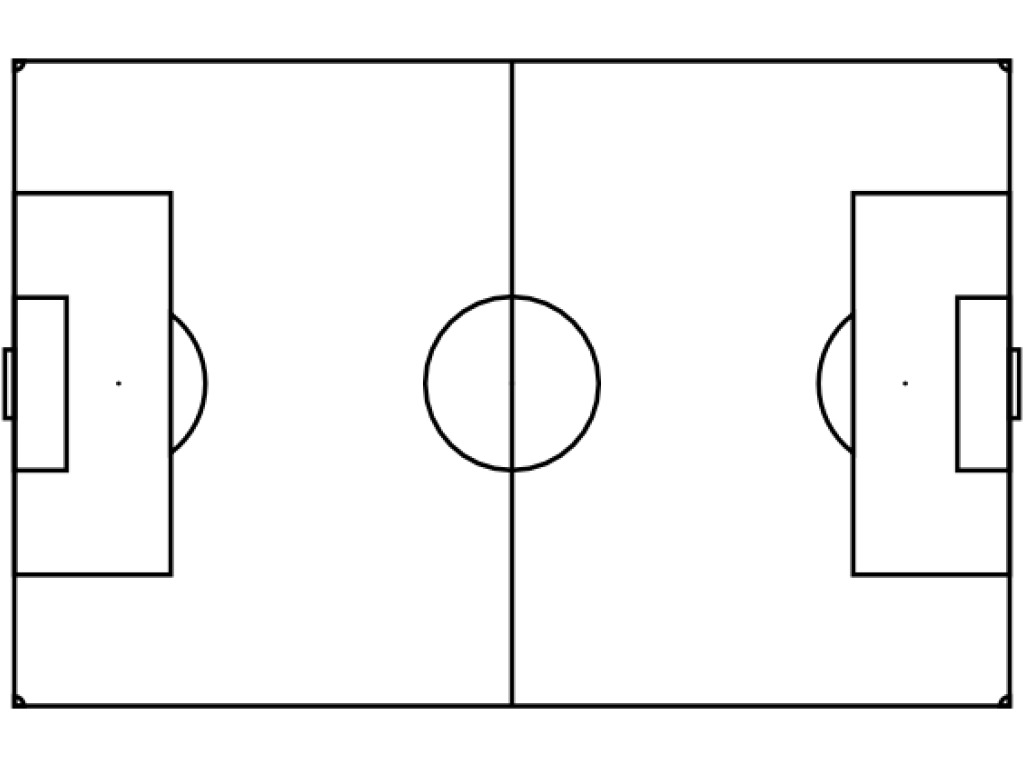Have you ever needed a printable soccer field diagram? Maybe you’re a coach trying to teach your team strategy or a player wanting to study various formations. Whatever the reason, we’ve got you covered with this handy diagram from Cliparts.co.
Soccer Field Diagram
 As you can see, the soccer field is divided into several sections, each with its own specific purpose. The rectangular field measures 100 to 130 yards in length and 50 to 100 yards in width, depending on the league and level of play. The two longer sides of the field are known as the touchlines, while the shorter sides are called the goal lines.
As you can see, the soccer field is divided into several sections, each with its own specific purpose. The rectangular field measures 100 to 130 yards in length and 50 to 100 yards in width, depending on the league and level of play. The two longer sides of the field are known as the touchlines, while the shorter sides are called the goal lines.
Goals
At either end of the field are two rectangular goals, measuring 24 feet wide and 8 feet high. The center of each goal is marked by a white line, while the penalty area extends 18 yards from the goal line and is 44 yards wide. The smaller rectangular area within the penalty area is the six-yard box, where goal kicks are taken.
Center Circle
The center of the field features a circle with a 10-yard radius. The first touch of the ball at the beginning of the game takes place within this circle, and players must remain outside of it until the ball has been touched.
Offsides Rule
One of the most important rules of soccer is the offsides rule. If a player is in an offside position when the ball is played to them, they cannot participate in active play and are penalized with a free kick for the opposing team. To be considered offside, a player must be in the opponent’s half of the field and closer to the goal than both the ball and the second-to-last defender.
Penalty Kicks
When a foul occurs within the penalty area, a penalty kick may be awarded. The penalty kick is taken from the penalty spot, which is 12 yards from the goal line. Only the goalkeeper and the kicker are allowed within the penalty area during the kick, and the ball must be struck forward for the kick to be valid.
Corners and Throw-Ins
When the ball goes out of play over the sidelines, a throw-in is awarded to the opposing team. The thrower must have both feet on the ground outside of the field and throw the ball with both hands from above the head. When the ball goes out of play over the goal line, a corner kick is awarded to the opposing team. The ball is placed within the corner arc and kicked back into play.
So there you have it - a comprehensive guide to the different sections of a soccer field, complete with a printable diagram for your convenience. Whether you’re a player or a coach, this information is crucial to understanding the game and playing to the best of your abilities.